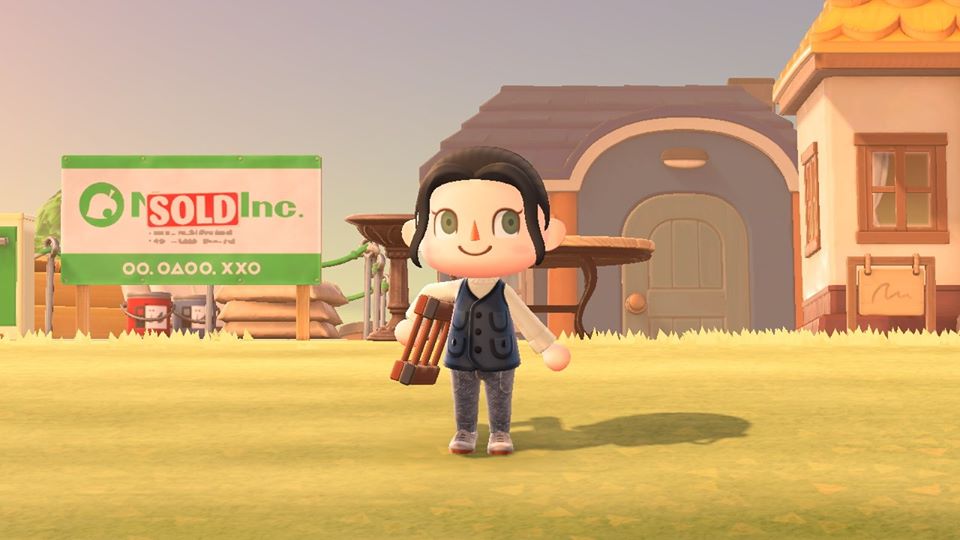Animal Crossing: New Horizons is the fifth installment in the Animal Crossing franchise. As the first entry of the series on the Nintendo Switch, it has been one of the most anticipated releases in the last year, along with Pokemon Sword and Shield. However, in an unanticipated twist, the game came out when most of the planet was either preparing to head into or were already in lockdown due to a global pandemic.
The premise is that you’re moving from an implied metropolitan life to a deserted island to escape your worries. Unlike previous games in the series, there is no town when you arrive – you literally build it from the ground up, even being able to terraform the island to your whims later in the game. Otherwise there is no real storyline. Animal Crossing doesn’t have a plot, but you build a community through completing menial tasks like fishing, fossil excavation, gardening and bug catching. These tasks reap rewards, like fish, bugs and fossils which you can donate to the museum, or sell for bells (the in-game currency). You can use the bells to pay off your debt to your friendly mortgage broker and head of island infrastructure,Tom Nook.
While the artstyle remains relatively unchanged, it is clear from looking at screenshots of the older games (even the last game in the franchise: New Leaf) there has been a big graphics upgrade. No longer are rooms decorated with flat textured wall art or black voids. My favourite example of this is the aquarium and bug rooms in the museum. The bug room has a lot more details with the addition of bugs and fish from different sections appearing in the other rooms. Meanwhile, the aquarium seems more interactive, with a walkthrough tunnel section which is very reminiscent of Nausicaä Centre National de la Mer in Bologne, France. The game uses the same visual trick from previous games where, when you’re walking outside, the land behind you falls over the horizon out of view of the player.
The gameplay has mostly remained the same, as has the actual gameplay loop. However, there are some changes in New Horizons, which make it easier to save up bells to pay off mortgages or pay for infrastructure etc. The inclusion of the crafting system, which I am mostly ambivalent about. Narratively it makes sense; you are literally making something from nothing on a deserted island and it gives you more of an incentive to shake trees and own an axe. The amount of times I’ve had to run home because my shovel/ fishing rod/net has broken and I don’t want to always be carrying sticks, hardwood or metal ingots with me.
Another change is the Nook Phone. This is an in-game smartphone that allows you to keep track of crafting recipes, Nook Miles critters and patterns. These features are a massive improvement to quality of life. For example, the Critterpedia tells you if you have submitted a particular fish or bugs to Blathers the Museum Curator. This is helpful as now you know what critters you’re missing without having to slowly walk through the museum with a notebook and pen.
Another addition to the game is Nook Miles, which is a new secondary form of in-game currency. Initially, you use Nook Miles to pay off your mortgage, but then they are used to buy recipes not available in the shop. Also you can use Miles to buy tickets which allow you to visit other islands where you can get different non-native flowers, trees, and fruits, as well as giving you a higher chance of catching rare fish.
That said the game is not without its drawbacks. This game is a massive time sink, and while right now this should not be an issue, in normal society it would be hard to access certain game features due to a busy schedule, work and school. For example, there are certain types of bugs and fish which only appear between 9 pm and 4 am. This is fine if you are playing as an adult, but this game has an age rating 3. I don’t know any parent that’s going to let their younger child play this after 9 pm at night. Additionally, these post-9 pm catches tend to be some of the rarest in the game, meaning you can play this game until midnight trying to catch a snapping turtle because you can have one as a pet. It is entirely possible that a child could have a generous parent who plays on their behalf after 9 pm, but from experience this is probably not the case for most parents. Meaning some objectives like completing the museum will never be finished without either cheating or breaking your parent’s rules.
Another criticism that I have is that the in-game events go on for too long. This might be because at the time of writing I have spent a fortnight digging up eggs, but a week is long enough for an event to run, eight days at most allowing space for two weekends for those with busy jobs. Something that could fix this is that the event could run for a fortnight, but if the player finishes everything earlier than that point, then they get the event to stop and only reoccur on the final day. Therefore, it doesn’t get in the way of other aspects of the game – like fossil hunting (I am so done with earth eggs).
As a whole, I found Animal Crossing: New Horizons to be a fun and relaxing game, with its release being at an ideal time. There have been some massive quality of life improvements to the game which just makes it more addictive. While there are some small issues; however they are mostly minor irritations which makes them stand out in an otherwise great game.
